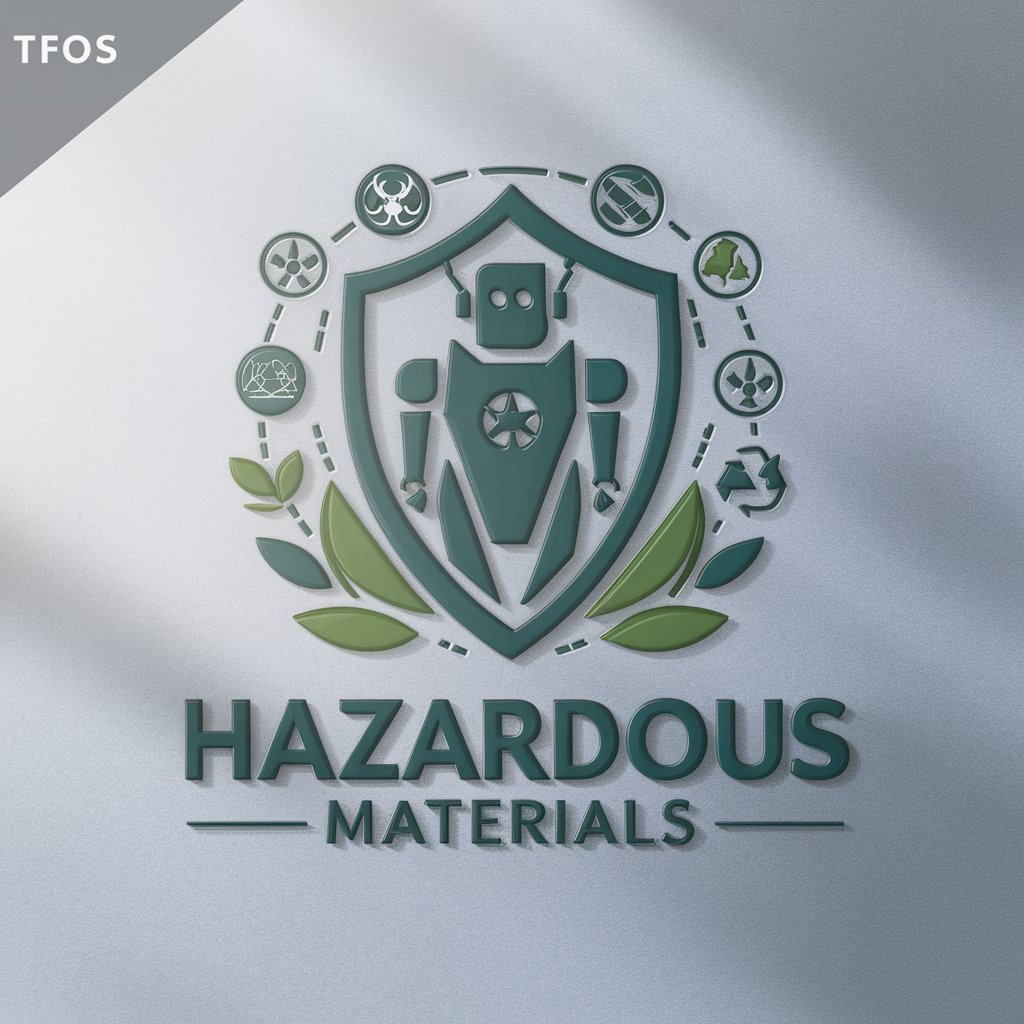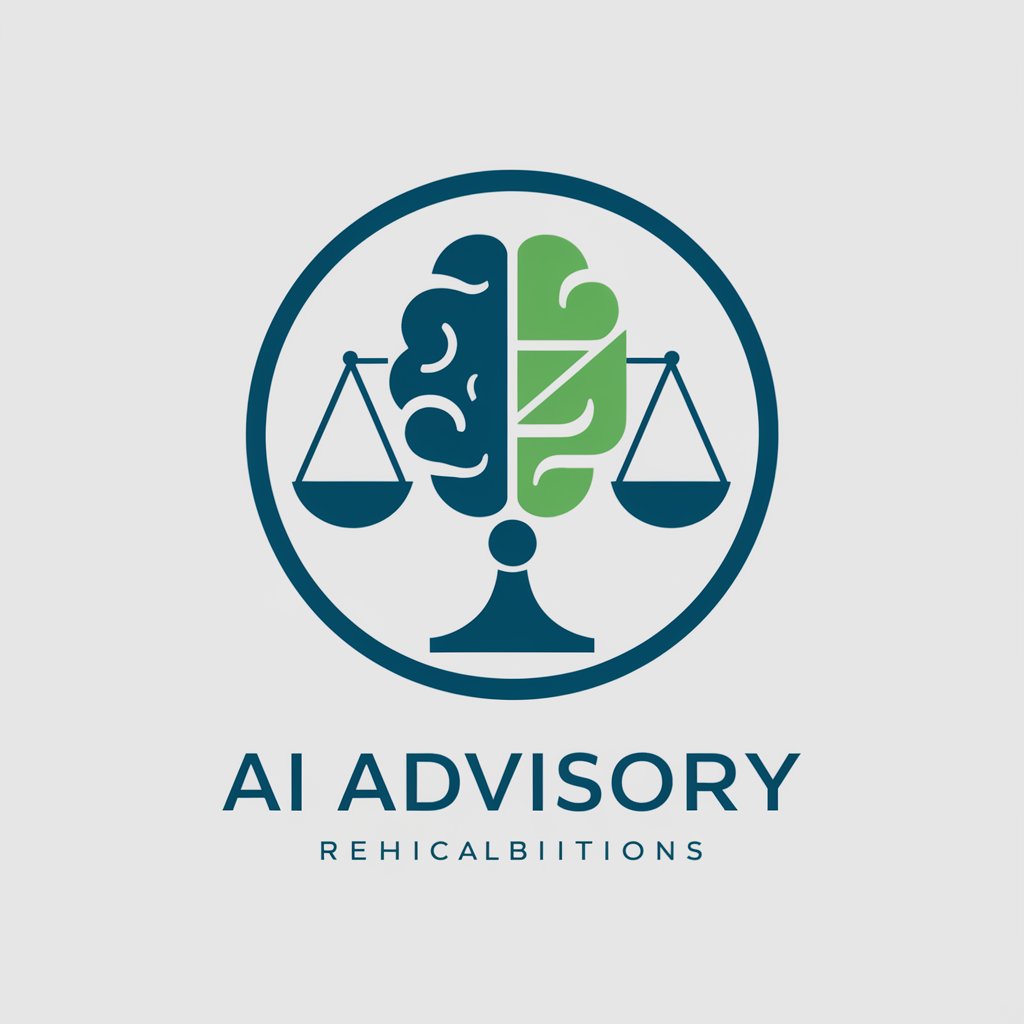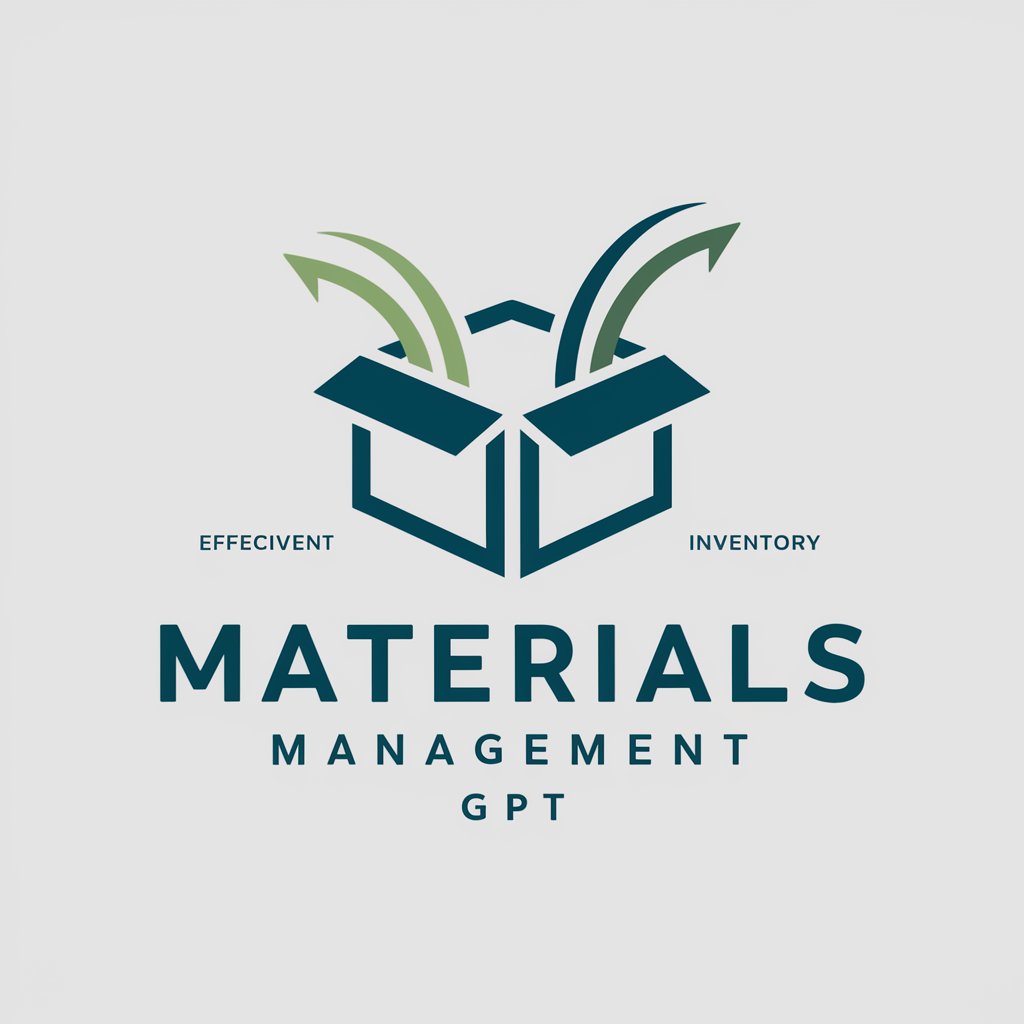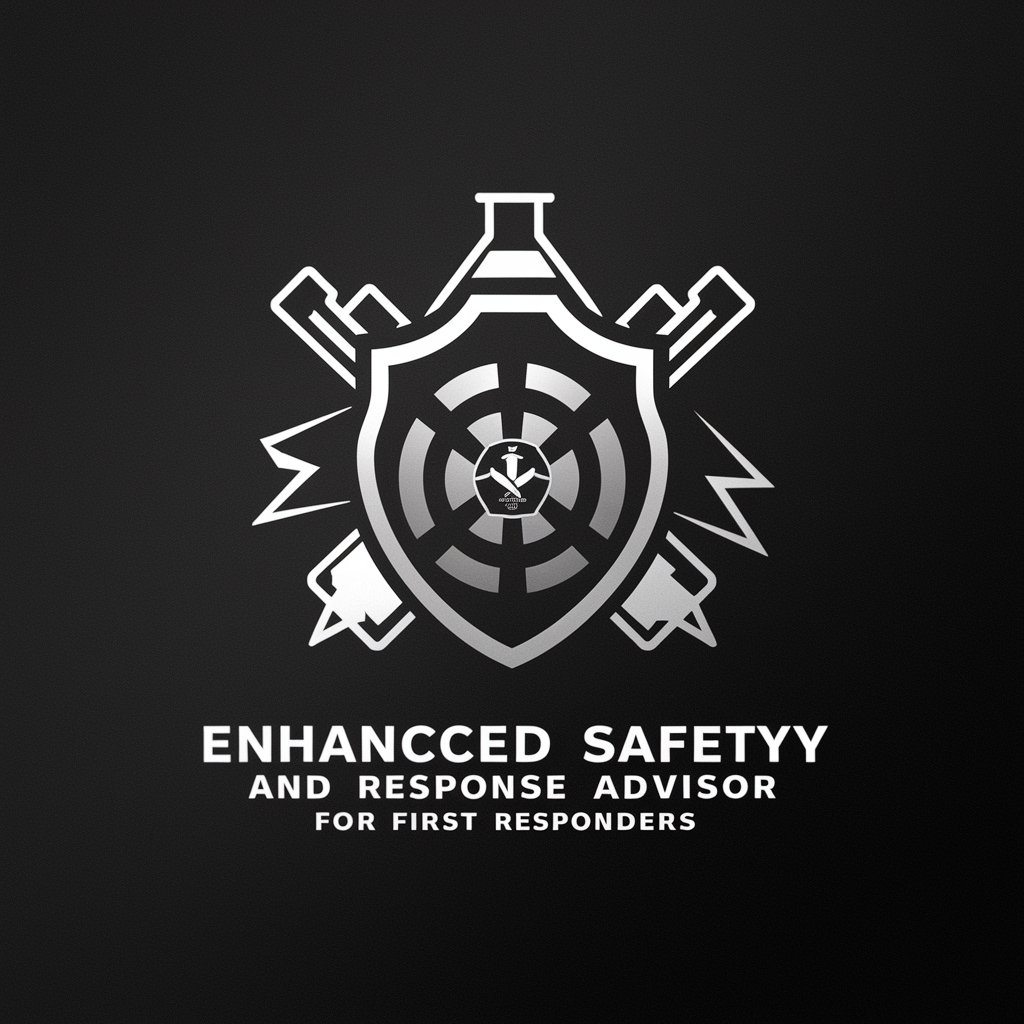
Hazardous Materials - Hazardous Materials Guidance

Welcome! I'm here to help with your hazardous materials questions. Safety and environmental protection are my priorities.
Navigating HazMat with AI Precision
Can you provide safety protocols for handling...
What are the environmental impacts of...
How should one store...
What are the regulations concerning...
Get Embed Code
Introduction to Hazardous Materials GPT
Hazardous Materials GPT is designed to serve as a comprehensive resource for handling, safety, and regulations concerning hazardous materials. Its core functionality revolves around providing accurate, reliable guidance on managing hazardous substances to ensure safety and environmental protection. This includes details on proper storage, transportation, disposal, and emergency response procedures for various hazardous materials. For instance, it can offer insights into managing a chemical spill in a laboratory, outlining steps to contain the spill, protect personnel, and notify relevant authorities, illustrating its practical application in promoting safety and compliance. Powered by ChatGPT-4o。

Main Functions of Hazardous Materials GPT
Safety Guidance
Example
Providing detailed instructions for safely handling chemical spills.
Scenario
In a scenario where a laboratory technician accidentally spills a corrosive substance, Hazardous Materials GPT offers a step-by-step guide to safely neutralize and clean up the spill, including personal protective equipment (PPE) recommendations, neutralization methods, and disposal procedures.
Regulatory Compliance
Example
Advising on compliance with local and international hazardous materials regulations.
Scenario
When a manufacturing company needs to ship hazardous goods overseas, Hazardous Materials GPT provides information on the relevant regulations, such as the International Maritime Dangerous Goods (IMDG) code or IATA regulations for air transport, ensuring that the company prepares and labels shipments correctly.
Emergency Response Planning
Example
Creating emergency response plans for incidents involving hazardous materials.
Scenario
For a community living near a chemical plant, Hazardous Materials GPT can assist in developing an emergency response plan that includes evacuation routes, communication strategies, and coordination with local emergency services, enhancing community preparedness for potential chemical release incidents.
Environmental Protection
Example
Guidance on minimizing environmental impact from hazardous waste.
Scenario
A waste management facility seeks to improve its hazardous waste disposal practices. Hazardous Materials GPT outlines best practices for waste minimization, recycling, and disposal methods that comply with environmental regulations, helping to reduce the facility's environmental footprint.
Ideal Users of Hazardous Materials Services
Industrial and Manufacturing Companies
These entities handle a wide range of hazardous materials in their operations, from raw chemicals to waste products. They benefit from guidance on safe handling practices, compliance with regulations, and implementing environmental protection measures.
Emergency Responders
Firefighters, paramedics, and hazardous material response teams require up-to-date information on dealing with hazardous materials incidents. They can use Hazardous Materials GPT for quick access to information on chemical properties, associated risks, and recommended protective actions.
Environmental and Regulatory Agencies
Agencies responsible for enforcing hazardous materials regulations and protecting the environment can utilize this GPT for educational resources, training materials, and to provide guidance to industries under their jurisdiction.
Educational Institutions and Researchers
Educators and researchers working with hazardous materials in laboratories can leverage Hazardous Materials GPT for information on safe laboratory practices, emergency procedures, and staying updated on the latest safety protocols.

Guidelines for Using Hazardous Materials
1
Start with a risk-free exploration by visiting a dedicated platform for a complimentary trial, no sign-up or premium membership required.
2
Identify the specific hazardous material you will be working with and consult its Safety Data Sheet (SDS) for detailed handling instructions.
3
Wear appropriate personal protective equipment (PPE) based on the hazard classification of the material, such as gloves, goggles, and respirators.
4
Follow proper storage protocols to ensure materials are kept in conditions that minimize risk of accidents, including compatibility and segregation of different classes of hazards.
5
Dispose of hazardous materials in accordance with local regulations and guidelines, ensuring environmental protection and safety of the community.
Try other advanced and practical GPTs
Global Heliogenesis University
Empowering sustainable construction with AI-driven insights.

Web Scraper Schema Assistant
Automate Structured Data Generation

AGI
Empowering Ethical Decisions with AI

Hack
Empowering Cybersecurity with AI

Moral Compass
Navigate ethical dilemmas with AI-powered insight.

Ethical AI Advisor
Navigating AI Ethics with Expertise

Materials Management
Streamlining operations with AI-driven insights

Q - Discover Products
AI-powered product-service analysis

New Products SEO
Optimizing Products with AI Power

AI Assistant Negotiator Supply Chain
Optimize negotiations with AI power

Party Supply
Elevate Your Events with AI-Powered Party Planning

Expert Secondary Math Educator
Elevating Math Education with AI

Frequently Asked Questions about Hazardous Materials
What defines a material as hazardous?
A material is classified as hazardous if it poses potential harm to humans, property, or the environment due to its chemical, physical, or biological characteristics. This includes flammable, corrosive, reactive, toxic, and biohazardous substances.
How can I find the Safety Data Sheet (SDS) for a hazardous material?
SDSs are usually provided by the manufacturer or supplier of the hazardous material. They can also be found online on the manufacturer's website or through specialized databases and platforms dedicated to chemical safety.
What is the importance of PPE when handling hazardous materials?
Personal Protective Equipment (PPE) is essential for minimizing exposure to hazardous materials, protecting against physical, chemical, and biological hazards. Proper PPE selection depends on the specific hazards of the material being handled.
How should hazardous waste be disposed of?
Hazardous waste must be disposed of in accordance with local regulations, which may include specific disposal methods, approved facilities, and documentation requirements to ensure environmental safety and prevent contamination.
Can hazardous materials be transported by individuals?
Transporting hazardous materials by individuals is subject to regulations that vary by jurisdiction, including proper packaging, labeling, and documentation. It is essential to consult local regulations and obtain any necessary permits or certifications.





